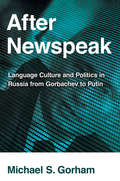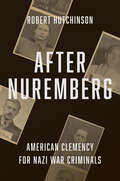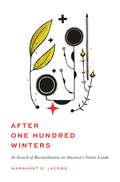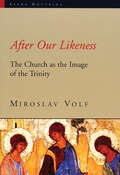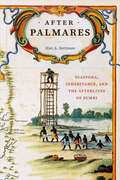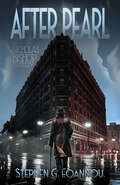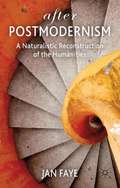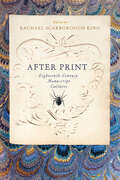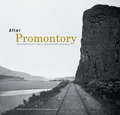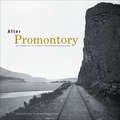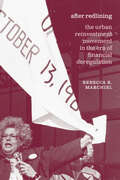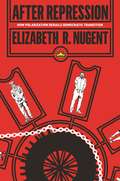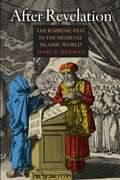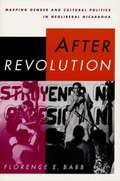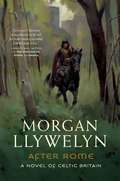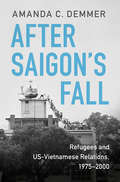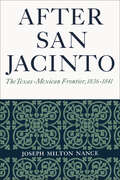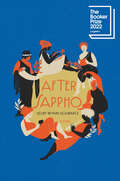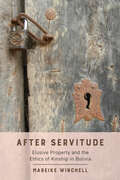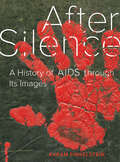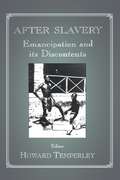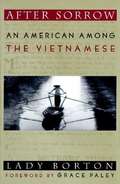- Table View
- List View
After Newspeak: Language Culture and Politics in Russia from Gorbachev to Putin
by Michael S. GorhamIn After Newspeak, Michael S. Gorham presents a cultural history of the politics of Russian language from Gorbachev and glasnost to Putin and the emergence of new generations of Web technologies. Gorham begins from the premise that periods of rapid and radical change both shape and are shaped by language. He documents the role and fate of the Russian language in the collapse of the USSR and the decades of reform and national reconstruction that have followed. Gorham demonstrates the inextricable linkage of language and politics in everything from dictionaries of profanity to the flood of publications on linguistic self-help, the speech patterns of the country's leaders, the blogs of its bureaucrats, and the official programs promoting the use of Russian in the so-called "near abroad."Gorham explains why glasnost figured as such a critical rhetorical battleground in the political strife that led to the Soviet Union's collapse and shows why Russians came to deride the newfound freedom of speech of the 1990s as little more than the right to swear in public. He assesses the impact of Medvedev's role as Blogger-in-Chief and the role Putin's vulgar speech practices played in the restoration of national pride. And he investigates whether Internet communication and new media technologies have helped to consolidate a more vibrant democracy and civil society or if they serve as an additional resource for the political technologies manipulated by the Kremlin.
After Nuremberg: American Clemency for Nazi War Criminals
by Robert HutchinsonHow the American High Commissioner for Germany set in motion a process that resulted in every non-death-row-inmate walking free after the Nuremberg trialsAfter Nuremberg is about the fleeting nature of American punishment for German war criminals convicted at the twelve Nuremberg trials of 1946–1949. Because of repeated American grants of clemency and parole, ninety-seven of the 142 Germans convicted at the Nuremberg trials, many of them major offenders, regained their freedom years, sometimes decades, ahead of schedule. High-ranking Nazi plunderers, kidnappers, slave laborers, and mass murderers all walked free by 1958. High Commissioner for Occupied Germany John J. McCloy and his successors articulated a vision of impartial American justice as inspiring and legitimizing their actions, as they concluded that German war criminals were entitled to all the remedies American laws offered to better their conditions and reduce their sentences. Based on extensive archival research (including newly declassified material), this book explains how American policy makers&’ best intentions resulted in a series of decisions from 1949–1958 that produced a self-perpetuating bureaucracy of clemency and parole that &“rehabilitated&” unrepentant German abettors and perpetrators of theft, slavery, and murder while lending salience to the most reactionary elements in West German political discourse.
After One Hundred Winters: In Search of Reconciliation on America's Stolen Lands
by Professor Margaret D. JacobsA necessary reckoning with America’s troubled history of injustice to Indigenous peopleAfter One Hundred Winters confronts the harsh truth that the United States was founded on the violent dispossession of Indigenous people and asks what reconciliation might mean in light of this haunted history. In this timely and urgent book, settler historian Margaret Jacobs tells the stories of the individuals and communities who are working together to heal historical wounds—and reveals how much we have to gain by learning from our history instead of denying it.Jacobs traces the brutal legacy of systemic racial injustice to Indigenous people that has endured since the nation’s founding. Explaining how early attempts at reconciliation succeeded only in robbing tribal nations of their land and forcing their children into abusive boarding schools, she shows that true reconciliation must emerge through Indigenous leadership and sustained relationships between Indigenous and non-Indigenous people that are rooted in specific places and histories. In the absence of an official apology and a federal Truth and Reconciliation Commission, ordinary people are creating a movement for transformative reconciliation that puts Indigenous land rights, sovereignty, and values at the forefront. With historical sensitivity and an eye to the future, Jacobs urges us to face our past and learn from it, and once we have done so, to redress past abuses.Drawing on dozens of interviews, After One Hundred Winters reveals how Indigenous people and settlers in America today, despite their troubled history, are finding unexpected gifts in reconciliation.
After Our Likeness: The Church as the Image of the Trinity (Sacra Doctrina: Christian Theology for a Postmodern Age)
by Miroslav VolfIn After Our Likeness, the inaugural volume in the Sacra Doctrina series, Miroslav Volf explores the relationship between persons and community in Christian theology. The focus is the community of grace, the Christian church. The point of departure is the thought of the first Baptist, John Smyth, and the notion of church as "gathered community" that he shared with Radical Reformers.Volf seeks to counter the tendencies toward individualism in Protestant ecclesiology and to suggest a viable understanding of the church in which both person and community are given their proper due. In the process he engages in a sustained and critical ecumenical dialogue with the Catholic and Orthodox ecclesiologies of Joseph Cardinal Ratzinger and the metropolitan John Zizioulas. The result is a brilliant ecumenical study that spells out a vision of the church as an image of the triune God.
After Oz: A Novel
by Gordon McAlpineThis gripping and emotionally riveting tale is a dark and timely retelling of The Wizard of Oz, where one little girl is forced to face head on the prejudices of the Midwest in the late nineteenth century.Kansas, 1896. After a tornado destroys the Gale family farm, eleven-year-old Dorothy goes missing. As the days pass, the Gales are increasingly terrified the worst has happened. But when the girl turns up unharmed four days later, the townsfolk breathe a sigh of relief. That is, until Dorothy herself relates her account of the events that took place during her disappearance. In vivid detail, Dorothy describes a fantastical land and its magical inhabitants: a scarecrow, a tin man, a cowardly lion, a wizard, a witch. Her recollections are not only regarded as delusional, but also as pagan and diabolical in nature, especially when the body of a local spinster is found matching Dorothy's description of a witch she claims to have killed. Authorities find incriminating evidence tying Dorothy to the real murder, and they sentence Dorothy to the Topeka Insane Asylum. When twenty-eight-year-old psychologist Dr. Evelyn Grace Wilford arrives at the asylum to interview Dorothy, she begins to wonder if Dorothy truly committed the crime or if something unfathomable has really occurred. In a small town full of insidious secrets, Evelyn sets out to save Dorothy from her terrible circumstances, but can't help but fear whether something menacing may be lurking just out of sight.
After Palmares: Diaspora, Inheritance, and the Afterlives of Zumbi (Radical Perspectives)
by Marc A HertzmanIn After Palmares, Marc A. Hertzman tells the rise, fall, and afterlives of Palmares, one of history’s largest and longest-lasting maroon societies. Forged during the seventeenth century by formerly enslaved Africans in what would become northeast Brazil, Palmares stood for a century, withstanding sustained attacks from two European powers. In 1695, colonial forces assassinated its most famous leader, Zumbi. Hertzman examines the remarkable ways that Palmares and its inhabitants lived on after Zumbi’s death, creating vivid portraits of those whose lives and voices scholars have often assumed are inaccessible. With an innovative approach to African languages, and paying close attention to place as well as African and diasporic spiritual beliefs, Hertzman reshapes our understanding of Palmares and Zumbi and advances a new framework for studying fugitive slave communities and marronage in the African diaspora.
After Pearl (The Nicholas Bishop Mysteries)
by Stephen G. Eoannou1942. War rages in Europe. Pearl Harbor still smolders. And alcoholic private eye Nicholas Bishop wakes up on a hotel room floor with two slugs missing from his .38 revolver. The cops think he' s murdered lounge singer Pearl DuGaye, mobsters think he saw something he shouldn' t have, and Bishop remembers nothing... Together with his indomitable assistant Gia Alessi, who he may or may not have fired, a WWI vet who often flashes back to 1918, and a one-eyed female dog named Jake, Bishop tries to piece together the events that took place during his disastrous five-day bender. Along the way, he stumbles across a dirty politician, a socialite and her unfaithful husband, and a cabal of American Nazis who are undoubtedly up to no good. Written in the spirit of classic noir, Eoannou adds his own unique voice and flair to the genre in this, the first action-packed outing of the Nicholas Bishop Mysteries...
After Piketty: The Agenda for Economics and Inequality
by Heather Boushey J. Bradford Delong Marshall SteinbaumAre Thomas Piketty’s analyses of inequality on target? Where should researchers go from here in exploring the ideas he pushed to the forefront of global conversation? In After Piketty, a cast of economists and other social scientists tackle these questions in dialogue with Piketty, in what is sure to be a much-debated book in its own right.
After Postmodernism
by Jan FayeThe philosophy of the humanistic sciences has been a blind-spot in analytic philosophy. This book argues that by adopting an appropriate pragmatic analysis of explanation and interpretation it is possible to show that scientific practice of humanistic sciences can be understood on similar lines to scientific practice of natural and social sciences.
After Print: Eighteenth-Century Manuscript Cultures
by Michelle Levy Beth Fowkes Tobin Rachael Scarborough King Philip S. Palmer Leith Davis Brian Rejack Margaret J. M. Ezell Emily C. Friedman Collin Jennings Kathryn R. King Marissa Nicosia Colin T. Ramsey Andrew O. WincklesThe eighteenth century has generally been understood as the Age of Print, when the new medium revolutionized the literary world and rendered manuscript culture obsolete. After Print, however, reveals that the story isn’t so simple. Manuscript remained a vital, effective, and even preferred forum for professional and amateur authors working across fields such as literature, science, politics, religion, and business through the Romantic period.The contributors to this book offer a survey of the manuscript culture of the time, discussing handwritten culinary recipes, the poetry of John Keats, Benjamin Franklin’s letters about his electrical experiments, and more. Collectively, the essays demonstrate that what has often been seen as the amateur, feminine, and aristocratic world of handwritten exchange thrived despite the spread of the printed word. In so doing, they undermine the standard print-manuscript binary and advocate for a critical stance that better understands the important relationship between the media.Bringing together work from literary scholars, librarians, and digital humanists, the diverse essays in After Print offer a new model for archival research, pulling from an exciting variety of fields to demonstrate that manuscript culture did not die out but, rather, may have been revitalized by the advent of printing.Contributors: Leith Davis, Simon Fraser University * Margaret J. M. Ezell, Texas A&M University * Emily C. Friedman, Auburn University * Kathryn R. King, University of Montevallo * Michelle Levy, Simon Fraser University * Marissa Nicosia, Penn State Abington * Philip S. Palmer, Morgan Library and Museum * Colin T. Ramsey, Appalachian State University * Brian Rejack, Illinois State University * Beth Fowkes Tobin, University of Georgia * Andrew O. Winckles, Adrian College
After Promontory: One Hundred and Fifty Years of Transcontinental Railroading
by Center for Railroad Photography & ArtCelebrating the sesquicentennial anniversary of the completion of the first transcontinental railroad in the United States, After Promontory: One Hundred and Fifty Years of Transcontinental Railroading profiles the history and heritage of this historic event. Starting with the original Union Pacific—Central Pacific lines that met at Promontory Summit, Utah, in 1869, the book expands the narrative by considering all of the transcontinental routes in the United States and examining their impact on building this great nation. Exquisitely illustrated with full color photographs, After Promontory divides the western United States into three regions—central, southern, and northern—and offers a deep look at the transcontinental routes of each one. Renowned railroad historians Maury Klein, Keith Bryant, and Don Hofsommer offer their perspectives on these regions along with contributors H. Roger Grant and Rob Krebs.
After Promontory: One Hundred and Fifty Years of Transcontinental Railroading
by Maury Klein Don L. Hofsommer Keith L. Bryant Jr. Drake Hokanson&“Some of the most accomplished scholars of railroad history…tell the story of these enterprises which totally re-shaped the western landscape.&”—The Michigan RailfanAfter Promontory profiles the history and heritage behind the completion of the first transcontinental railroad in the United States. Starting with the original Union Pacific—Central Pacific lines that met at Promontory Summit, Utah, in 1869, the book expands the narrative by considering all of the transcontinental routes in the United States and examining their impact on building this great nation. Exquisitely illustrated with full color photographs, After Promontory divides the western United States into three regions—central, southern, and northern—and offers a deep look at the transcontinental routes of each one. Included are contributions by such renowned railroad historians as Maury Klein, Keith Bryant, Don Hofsommer, H. Roger Grant, and Rob Krebs. Includes photos
After Redlining: The Urban Reinvestment Movement in the Era of Financial Deregulation (Historical Studies of Urban America)
by Rebecca K. MarchielAmerican banks, to their eternal discredit, long played a key role in disenfranchising nonwhite urbanites and, through redlining, blighting the very city neighborhoods that needed the most investment. Banks long showed little compunction in aiding and abetting blockbusting, discrimination, and outright theft from nonwhites. They denied funds to entire neighborhoods or actively exploited them, to the benefit of suburban whites—an economic white flight to sharpen the pain caused by the demographic one. And yet, the dynamic between banks and urban communities was not static, and positive urban development, supported by banks, became possible. In After Redlining, Rebecca K. Marchiel illuminates how, exactly, urban activists were able to change some banks’ behavior to support investment in communities that they had once abandoned. The leading activists arose in an area hit hard by banks’ discriminatory actions and politics: Chicago’s West Side. A multiracial coalition of low-and moderate-income city residents, this Saul Alinsky–inspired group championed urban reinvestment. And amazingly, it worked: their efforts inspired national action, culminating in the federal Home Mortgage Disclosure Act and the Community Reinvestment Act. While the battle for urban equity goes on, After Redlining provides a blueprint of hope.
After Repression: How Polarization Derails Democratic Transition (Princeton Studies in Political Behavior #24)
by Elizabeth R. NugentHow differing forms of repression shape the outcomes of democratic transitionsIn the wake of the Arab Spring, newly empowered factions in Tunisia and Egypt vowed to work together to establish democracy. In Tunisia, political elites passed a new constitution, held parliamentary elections, and demonstrated the strength of their democracy with a peaceful transfer of power. Yet in Egypt, unity crumbled due to polarization among elites. Presenting a new theory of polarization under authoritarianism, After Repression reveals how polarization and the legacies of repression led to these substantially divergent political outcomes.Drawing on original interviews and a wealth of new historical data, Elizabeth Nugent documents polarization among the opposition in Tunisia and Egypt prior to the Arab Spring, tracing how different kinds of repression influenced the bonds between opposition groups. She demonstrates how widespread repression created shared political identities and decreased polarization—such as in Tunisia—while targeted repression like that carried out against the Muslim Brotherhood in Egypt led opposition groups to build distinct identities that increased polarization among them. This helps explain why elites in Tunisia were able to compromise, cooperate, and continue on the path to democratic consolidation while deeply polarized elites in Egypt contributed to the rapid reentrenchment of authoritarianism.Providing vital new insights into the ways repression shapes polarization, After Repression helps to explain what happened in the turbulent days following the Arab Spring and illuminates the obstacles to democratic transitions around the world.
After Revelation: The Rabbinic Past in the Medieval Islamic World (Jewish Culture and Contexts)
by Marc HermanReveals how medieval Jews developed religious law through contact with their Muslim neighborsAfter Revelation offers a dynamic new perspective on medieval Jewish legal thought and its integration in the wider Islamic world. Here, Marc D. Herman demonstrates that Jews were fully conversant in their contemporaries’ ideas about revelation, law, and legal interpretation. Bookended by the two luminaries of medieval Judaism—Saadia Gaon and Moses Maimonides—After Revelation analyzes the legal theory that medieval Jews produced in Islamic lands, mostly in Arabic, and reveals previously unrecognized commonalities between Jewish and Islamic constructions of religious law.Herman tackles one of the central doctrines of post-biblical Judaism: that God had supplemented the written Hebrew Bible with an Oral Torah. Tracing this idea from Baghdad to Córdoba to Cairo, he shows that the Oral Torah took many new forms in the medieval Islamic world. After Revelation makes plain that medieval Judaism took the shapes that it did largely because of contact with Islam.
After Revolution: Mapping Gender and Cultural Politics in Neoliberal Nicaragua
by Babb Florence E.Nicaragua's Sandinista revolution (1979-1990) initiated a broad program of social transformation to improve the situation of the working class and poor, women, and other non-elite groups through agrarian reform, restructured urban employment, and wide access to health care, education, and social services. This book explores how Nicaragua's least powerful citizens have fared in the years since the Sandinista revolution, as neoliberal governments have rolled back these state-supported reforms and introduced measures to promote the development of a market-driven economy. Drawing on ethnographic research conducted throughout the 1990s, Florence Babb describes the negative consequences that have followed the return to a capitalist path, especially for women and low-income citizens. In addition, she charts the growth of women's and other social movements (neighborhood, lesbian and gay, indigenous, youth, peace, and environmental) that have taken advantage of new openings for political mobilization. Her ethnographic portraits of a low-income barrio and of women's craft cooperatives powerfully link local, cultural responses to national and global processes.
After Rome: A Novel of Celtic Britain
by Morgan LlywelynAfter more than four hundred years of Roman rule, the island its conquerors called Britannia was abandoned―left to its own devices as the Roman empire contracted in a futile effort to defend itself from the barbarian hordes encroaching upon its heart. As Britannia falls into anarchy and the city of Viroconium is left undefended, two cousins who remained behind when the imperial forces withdrew pursue very different courses in the ensuing struggle to unite the disparate tribes and factions throughout the land.<P><P> Passionate, adventurous Dinas recruits followers and dreams of kingship. Thoughtful Cadogan saves a group of citizens when Saxons invade and burn Viroconium, then becomes the reluctant founder and leader of a new community that rises in the wilderness. The two cousins could not be more different, but their parallel stories encapsulate the era of a new civilization struggling to be born.
After Saigon's Fall: Refugees and US-Vietnamese Relations, 1975–2000 (Cambridge Studies in US Foreign Relations)
by Amanda C. DemmerFew historians of the Vietnam War have covered the post-1975 era or engaged comprehensively with refugee politics, humanitarianism, and human rights as defining issues of the period. After Saigon's Fall is the first major work to uncover this history. Amanda C. Demmer offers a new account of the post-War normalization of US–Vietnam relations by centering three major transformations of the late twentieth century: the reassertion of the US Congress in American foreign policy; the Indochinese diaspora and changing domestic and international refugee norms; and the intertwining of humanitarianism and the human rights movement. By tracing these domestic, regional, and global phenomena, After Saigon's Fall captures the contingencies and contradictions inherent in US-Vietnamese normalization. Using previously untapped archives to recover a riveting narrative with both policymakers and nonstate advocates at its center, Demmer's book also reveals much about US politics and society in the last quarter of the twentieth century.
After San Jacinto: The Texas-Mexican Frontier, 1836–1841
by Joseph Milton NanceA balanced account of the skirmishes along Texas&’ borderland during the years between the Battle of San Jacinto and the Mexican seizure of San Antonio. The stage was set for conflict: The First Congress of the Republic of Texas had arbitrarily designated the Rio Grande as the boundary of the new nation. Yet the historic boundaries of Texas, under Spain and Mexico, had never extended beyond the Nueces River. Mexico, unwilling to acknowledge Texas independence, was even more unwilling to allow this further encroachment upon her territory. But neither country was in a strong position to substantiate claims; so the conflict developed as a war of futile threats, border raids, and counterraids. Nevertheless, men died—often heroically—and this is the first full story of their bitter struggle. Based on original sources, it is an unbiased account of Texas-Mexican relations in a crucial period. &“Solid regional history.&” —The Journal of Southern History
After San Jacinto: The Texas-Mexican Frontier, 1836–1841
by Joseph Milton NanceA balanced account of the skirmishes along Texas&’ borderland during the years between the Battle of San Jacinto and the Mexican seizure of San Antonio. The stage was set for conflict: The First Congress of the Republic of Texas had arbitrarily designated the Rio Grande as the boundary of the new nation. Yet the historic boundaries of Texas, under Spain and Mexico, had never extended beyond the Nueces River. Mexico, unwilling to acknowledge Texas independence, was even more unwilling to allow this further encroachment upon her territory. But neither country was in a strong position to substantiate claims; so the conflict developed as a war of futile threats, border raids, and counterraids. Nevertheless, men died—often heroically—and this is the first full story of their bitter struggle. Based on original sources, it is an unbiased account of Texas-Mexican relations in a crucial period. &“Solid regional history.&” —The Journal of Southern History
After Sappho: A Novel
by Selby Wynn SchwartzLONGLISTED FOR THE 2022 BOOKER PRIZE A Guardian Best Book of the Year Lit Hub: Most Anticipated Books of 2023 "Words can be an incantation; the right verse can summon desire and a depth of feeling... A good phrase can unleash something inside a person; it can unearth and provoke. [In] 'After Sappho', long-listed for the 2022 Booker Prize in fiction, the verses of the sixth-century BCE Greek poet do all this and so much more." —Adriana E. Ramírez, Boston Globe An exhilarating debut from a radiant new voice, After Sappho reimagines the intertwined lives of feminists at the turn of the twentieth century. “The first thing we did was change our names. We were going to be Sappho,” so begins this intrepid debut novel, centuries after the Greek poet penned her lyric verse. Ignited by the same muse, a myriad of women break from their small, predetermined lives for seemingly disparate paths: in 1892, Rina Faccio trades her needlepoint for a pen; in 1902, Romaine Brooks sails for Capri with nothing but her clotted paintbrushes; and in 1923, Virginia Woolf writes: “I want to make life fuller and fuller.” Writing in cascading vignettes, Selby Wynn Schwartz spins an invigorating tale of women whose narratives converge and splinter as they forge queer identities and claim the right to their own lives. A luminous meditation on creativity, education, and identity, After Sappho announces a writer as ingenious as the trailblazers of our past. “This book is splendid: Impish, irate, deep, courageous. . . . Brava!”—Lucy Ellmann, author of Ducks, Newburyport
After Servitude: Elusive Property and the Ethics of Kinship in Bolivia
by Dr. Mareike WinchellHow are injurious pasts redeployed by the dispossessed? After Servitude explores how agrarian engineers, Indigenous farmers, Mestizo mining bosses, and rural workers navigate racial hierarchies rooted in histories of forced agrarian labor. In the rural Bolivian province of Ayopaya, where the liberatory promises of property remain elusive, Quechua people address such hierarchies by demanding aid from Mestizo elites and, when that fails, through acts of labor militancy. Against institutional faith in property ownership as a means to detach land from people and present from past, the kin of former masters and servants alike have insisted that ethical debts from earlier racial violence stretch across epochs and formal land sales. What emerges is a vision of justice grounded in popular demands that wealth remain beholden to the region’s agrarian past. By tracing Ayopayans’ active efforts to contend with servitude’s long shadow, Mareike Winchell illuminates the challenges that property confronts as both an extractive paradigm and a means of historical redress.
After Silence: A History of AIDS through Its Images
by Avram Finkelstein<P>Early in the 1980s AIDS epidemic, six gay activists created one of the most iconic and lasting images that would come to symbolize a movement: a protest poster of a pink triangle with the words “Silence = Death.” <P>The graphic and the slogan still resonate today, often used—and misused—to brand the entire movement. Cofounder of the collective Silence = Death and member of the art collective Gran Fury, Avram Finkelstein tells the story of how his work and other protest artwork associated with the early years of the pandemic were created. <P>In writing about art and AIDS activism, the formation of collectives, and the political process, Finkelstein reveals a different side of the traditional HIV/AIDS history, told twenty-five years later, and offers a creative toolbox for those who want to learn how to save lives through activism and making art.
After Slavery: Emancipation and its Discontents
by Howard TemperleyA collection of essays in which every contributor focuses upon some aspect of slave emancipation with the aim of assessing to what extent the outcome met with expectation. The hopes and disappointments that characterized the transition from slavery to freedom are depicted.
After Sorrow: An American Among the Vietnamese
by Lady BortonMoving story of the people of Viet Nam by an American woman whose experiences in Viet Nam span 25 years. Tells stories of ordinary people, especially women, during and since the war.
